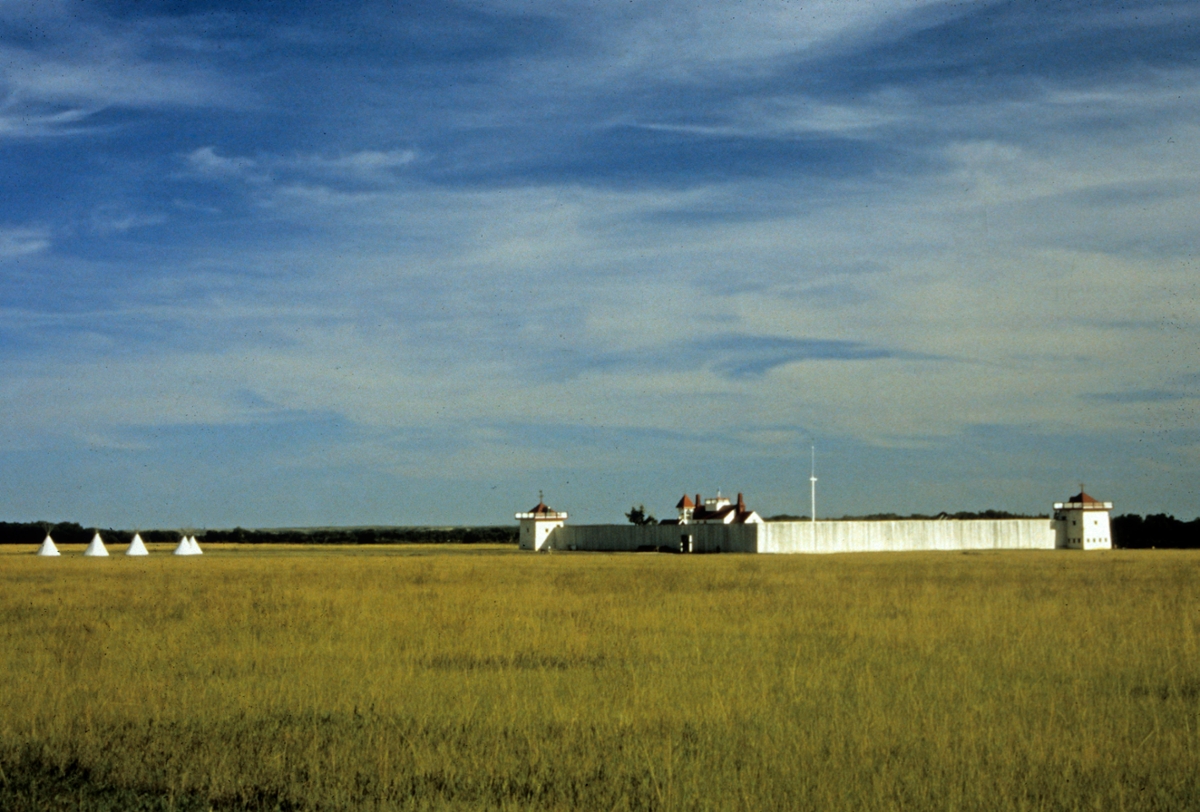Find Adventures in "Confluence Country"
 Fort Union (Photo by Rick and Susie Graetz)
Fort Union (Photo by Rick and Susie Graetz)
Some of Montana’s earliest recorded history played out on the eastern fringes of our state. Through Fort Union, this “Confluence Country” held supremacy over the fur trade business of the Upper Missouri from about 1830 until the 1850's.
On April 27, 1805, the Corps of Discovery, after having spent a few days at the joining of the two rivers, (just across the state line in North Dakota), first entered what would become Montana Territory. Meriwether Lewis noted in the expedition journals ... “we saw great quantities of game today; consisting of common and mule deer, Elk, Buffalo, and Antelopes; also brown bear ... the beaver have cut great quantities of timber; saw a tree nearly 3 feet in diameter that had been felled by them.” The next day they met their first grizzly bear.
Save for a few small towns and cultivated areas, much of this landscape has changed little since the first explorers and trappers wandered through it. The bison, elk and bears are gone, but other wildlife make a good living in this area of the Northern Great Plains.
Big river scenery, extensive badlands, prairie wildlife and a taste of Montana’s past is what this area is about. Sidney, a farming town on the banks of the final downstream flow of the Yellowstone River, is a good location for your camp, be it in a motel or campground. This community of about 5,200 folks is home to the Mondak Heritage Center, a great place to look at the local history through its exhibits, library and reference department. A stop here will give you a better understanding of the sites you’ll encounter while exploring this far-side of our state.
South of Sidney on the west side of the Yellowstone, U.S. Highway 16 leads to the Elk Island and Seven Sisters wildlife management areas. These wildlife havens are habitat for waterfowl, turkeys and whitetail deer. Elk Island has a boat ramp that allows access to the river and islands. Consider floating from here to Seven Sisters. Rebecca Kallevig, a teacher out of Sidney, said it takes from five to seven hours to do this 12-mile stretch of water. She recommends paddling hard once you put in at Elk Island in order to get in the right side channel, as that is where the best scenery is. Enroute sightings of eagles, blue heron and all manners of birdlife along the way are a strong possibility.
North from Sidney you can reach the Missouri and make a ninety-three mile loop trip through some more rugged breaks and badland topography. Follow Highway 16 to Culbertson 37 miles away. At this eastern Hi-Line town, turn on U.S. Highway 2 for 16 miles to Bainville and then steer south on the Bainville-Snowden Road. Ask directions in Bainville as well as using your map. The byway takes off on the south end of town. It is 15 miles from there to Fort Union and then another 25 miles back to Sidney.
Make time to stop at Fort Union (open year round 8 a.m. to 4 p.m). In 1828, the American Fur Company established the fort on the Missouri River about 3 to 4 miles upstream from where the two rivers met. Since those long ago days, river action has shifted the Missouri several hundred feet south of where it was then and the confluence 1 mile southeast of its 1828 location.
With the end of the fur trade era in the 1860's, Fort Union fell into disrepair. Some buildings were dismantled and moved to Fort Buford two miles downstream, and the rest of the wood was sold as steamboat fuel. However, the original cornerstones were found, and today an exact replica of the first fort has been reconstructed on the site.
Steamboats on their way to and from Fort Benton were able to dock very close to the outpost (closer than would be possible now). As a result, in its heyday Fort Union was visited by some of the colorful names of the West such as artists Karl Bodmer and J.J. Audubon, Jim Bridger, Father deSmet and Germany’s Prince Maximilian.
Today’s Fort Union Trading Post National Historic Site has a library holding rare, first-edition books about the fort and a wealth of information on the northwest fur trade, which may be used for research if arrangements are made ahead of time by calling 701-572-9083.
Moving back toward Sidney from Fort Union, you’ll pass through Fairview, Montana/North Dakota, a town in two states, but governed by Montana.
Rick and Susie Graetz | Department of Geography | University of Montana
